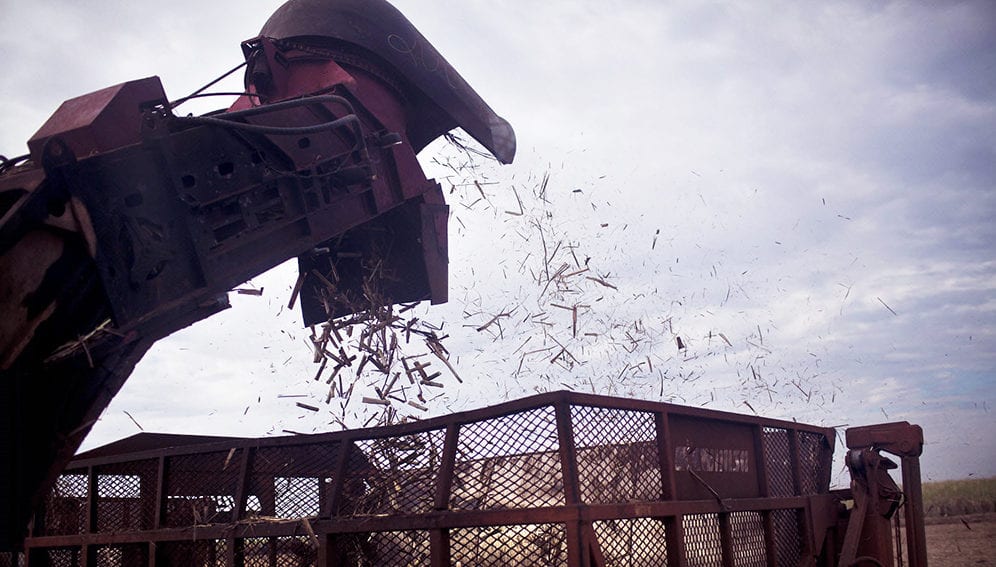Send to a friend
The details you provide on this page will not be used to send unsolicited email, and will not be sold to a 3rd party. See privacy policy.
[SÃO PAULO] By integrating the cultivation of sugarcane for ethanol with beef cattle breeding on the same land, Brazil could increase food and sustainable fuel production without extra deforestation, a study suggests.
Brazil is already the world’s largest sugarcane producer, the largest sugar producer, and the second largest ethanol producer. In 2017, the country produced over 600 million tonnes of sugarcane.
The country has also the second biggest cattle herd after the US, with over 200 million heads, and in 2016, the country produced over 9 million tonnes of beef.
According to computer simulations conducted by the researchers, Brazil should adapt its ethanol mills so they could transform sugarcane by-products —such as bagasse, yeast, and molasses— into cattle feeds, avoiding pasture encroachment.
Including these in cattle diets would mean farmers could maintain meat production during the dry season, when pasture levels decline. It would contain more energy and protein, increasing the rate at which animals gain weight.
“The US model for corn ethanol and cattle integration might be adapted to Brazilian conditions and applied to sugarcane ethanol and cattle production chains, increasing ethanol production without expanding agricultural frontiers,” says Rinke Dias de Souza, agricultural engineer at the Campinas State University’s School of Agricultural Engineering, and lead author of the study published in Biomass and Bioenergy journal.
In the north-eastern US, known as the corn belt region, ethanol by-products have been widely used as cattle feed since country started producing it in the 2000s.
The model makes dual use of the same land – sowing corn to produce ethanol and breeding cattle fed with the by-product of the production. Improved soil, weed control, interruption of insects and disease cycles, and availability of high-quality food for cattle are amongst main benefits of the model, studies show.
“By using ethanol by-products as animal feed, the ethanol and beef sectors do not compete for feedstock,” Souza tells SciDev.Net.
“By using ethanol by-products as animal feed, the ethanol and beef sectors do not compete for feedstock.”
Narie Rinke Dias de Souza – Campinas State University’s School of Agricultural Engineering
The simulations have shown that such integration is economically feasible in Brazil, since it has roughly 64.7 million hectares available for sugarcane and 37.2 million hectares available to expand on current pasturelands, without compromising native vegetation and forest areas.
Brazil’s ethanol is a clean fuel alternative to fossil fuel: about 27 millions of cars – 73 per cent of the total – may use either gasoline or ethanol. Still, sugarcane expansion is constantly blamed as one of the main reasons for Amazon rainforest deforestation.
From the environmental perspective, total ethanol plant emissions of carbon dioxide would be 40 per cent lower in the integrated model compared to the non-integrated one.
“It would enable country to meet most of its commitments under the Paris Agreement, which includes decreasing 43 per cent of its greenhouse gas emissions by 2030 and adding 45 per cent of renewable fuels into its energy sources — as well as decreasing illegal deforestation,” says Rinke Dias de Souza.
Marcos Buckeridge, a botanist at the University of São Paulo’s Institute of Bioscience, says the proposal presented in the study is valid and that the adaptation of such model might work in Brazil.
However, he highlights that “it ought to be carefully studied in order to be correctly introduced in the country”. He explains that such an integrated system could be better applied in west-central Brazil, where livestock production is concentrated.
“In regions like São Paulo state, despite of being responsible for most of Brazilian production of sugarcane, it would be better to promote strategies aimed recovering deforested areas, as forests are able fix 18 times more CO2 than sugarcane,” he tells SciDev.Net.
For Suani Coelho, a chemistry engineer at the University of São Paulo’s Institute of Energy and Environment, the option presented in the study has some challenges for its application in Brazil.“Sugarcane by-products, like stalks and bagasse, are already used for many things in Brazil, between them, to produce second-generation ethanol”, she explains. Manufacturing of second-generation ethanol is even more environmentally friendly than first-generation ethanol.
"There is not enough waste to encompass everything," she points out.
The study published in Biomass and Bioenergy was supported by FAPESP, a SciDev.Net donor.














